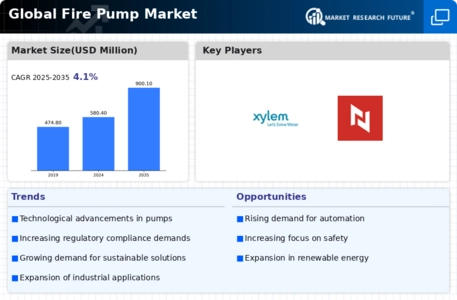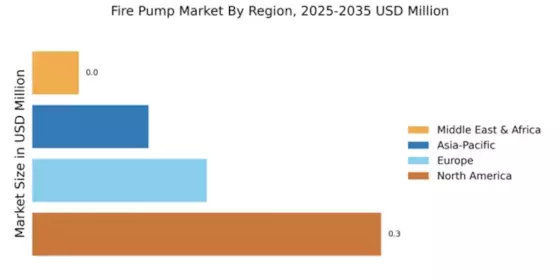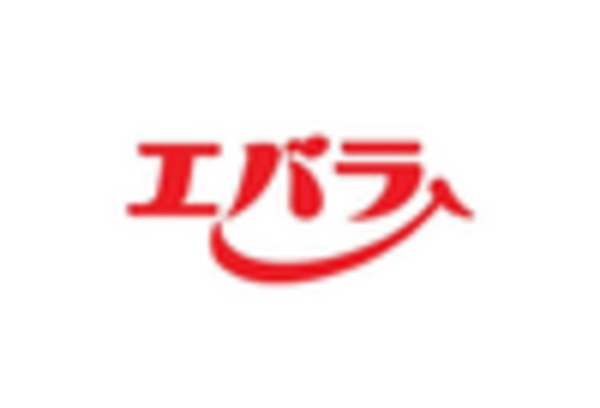Chart Representation
The Global Fire Pump Market Industry is characterized by various trends and metrics that illustrate its growth trajectory. Key data points include the market valuation of 580.4 USD Million in 2024 and a projected increase to 900.1 USD Million by 2035. The anticipated CAGR of 4.07% from 2025 to 2035 further emphasizes the industry's potential for expansion. These figures reflect the increasing demand for fire safety solutions across various sectors, driven by urbanization, regulatory compliance, and technological advancements.
Regulatory Compliance
Stringent regulations regarding fire safety are significantly influencing the Global Fire Pump Market Industry. Governments worldwide are implementing rigorous standards to ensure the safety of buildings and public spaces. Compliance with these regulations often necessitates the installation of advanced fire pumps, which are essential for effective fire suppression. For instance, the National Fire Protection Association (NFPA) sets guidelines that many countries adopt. As a result, the demand for compliant fire pumps is expected to increase, contributing to the market's projected growth to 900.1 USD Million by 2035. This regulatory landscape compels manufacturers to innovate and enhance their product offerings to meet evolving standards.
Increasing Urbanization
The Global Fire Pump Market Industry is experiencing growth driven by rapid urbanization. As cities expand, the demand for effective fire protection systems rises, necessitating advanced fire pumps. Urban areas, characterized by dense populations and high-rise buildings, require reliable fire suppression systems to ensure safety. This trend is particularly evident in developing regions, where infrastructure development is accelerating. The Global Fire Pump Market is projected to reach 580.4 USD Million in 2024, reflecting the urgent need for enhanced fire safety measures in urban settings. Consequently, manufacturers are innovating to meet the specific requirements of urban environments, further propelling market growth.
Technological Advancements
Technological innovations are reshaping the Global Fire Pump Market Industry, leading to the development of more efficient and reliable fire suppression systems. Advancements in pump design, materials, and control systems enhance performance and reduce operational costs. For example, the integration of IoT technology allows for real-time monitoring and predictive maintenance, improving the reliability of fire pumps. These innovations not only meet the growing demand for efficiency but also align with sustainability goals. As the market evolves, the adoption of these technologies is likely to drive growth, contributing to a projected CAGR of 4.07% from 2025 to 2035, indicating a robust future for the industry.
Rising Awareness of Fire Safety
The increasing awareness of fire safety among businesses and consumers is a pivotal driver of the Global Fire Pump Market Industry. Educational campaigns and high-profile fire incidents have heightened the understanding of fire risks, prompting organizations to invest in fire protection systems. This awareness translates into a growing demand for reliable fire pumps, as entities seek to safeguard lives and property. Moreover, industries such as manufacturing, healthcare, and hospitality are prioritizing fire safety, further fueling market growth. As a result, the Global Fire Pump Market is poised for expansion, with projections indicating a significant increase in demand over the coming years.


















Leave a Comment